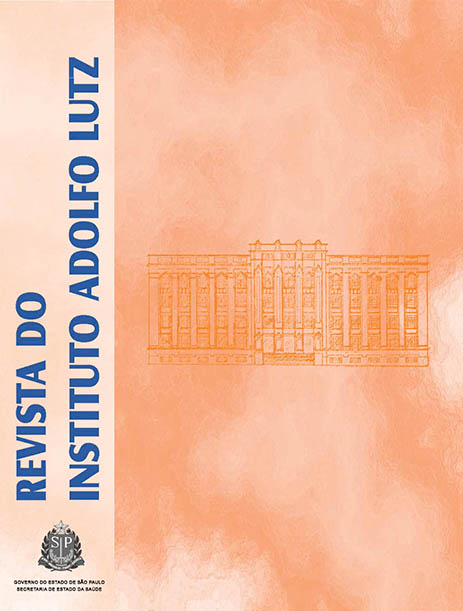Abstract
The antimicrobial activity of eugenol was evaluated on Alicyclobacillus hesperidum, Alicyclobacillus cycloheptanicus, Alicyclobacillus acidiphilus, Alicyclobacillus acidoterrestris and Alicyclobacillus spp. samples, which were isolated from orange juice industries of several regions of São Paulo. The antimicrobial susceptibility to eugenol was tested by determining the minimum inhibitory concentration (MIC) by microdilution technique in 96-well plates. The MIC of eugenol ranged from 66.65 to > 1066.4 μg/mL, showing strong and moderate inhibitory activity on all of tested bacteria samples, and its bactericidal activity. In this study, the source of Alicyclobacillus spp. strains isolation in industries proved to be significant. Considering the observed results, it can conclude that eugenol has antimicrobial effectiveness on Alicyclobacillus spp., and it is suggested the use of this compound for preventing the acidified beverages deterioration, and to decrease the cost of microbiological control specifically in orange juice.References
1. Yamazaki K, Murakami M, Kawai Y, Inoue N, Matsuda T. Use of nisin for inhibition of Alicyclobacillus acidoterrestris in acidic drinks. Food Microbiol. 2000;17:315-20.
2. Luo H, Yousef AE, Wang HH. A real-time polymerase chain reaction-based method for rapid and specific detection of spoilage Alicyclobacillus spp. in apple juice. Lett Appl Microbiol. 2004;39:376-82.
3. Gouws PA, Gie L, Pretorius A, Dhansay N. Isolation and identification of Alicyclobacillus acidocaldarius by 16S rDNA from mango juice and concentrate. Int J Food Sci Technol. 2005;40:789-92.
4. Groenewald WH, Gouws PA, Witthuhn RC. Isolation, identification and typification of Alicyclobacillus acidoterrestrisand Alicyclobacillus acidocaldarius strains from orchard soil and the fruit processing environment in South Africa. Food Microbiol. 2009;26:71-6.
5. Bevilacqua A, Corbol MR, Sinigaglia M. Inhibition of Alicyclobacillus acidoterrestris spores by natural compounds. Int J Food Sci Technol. 2008;43:1271-5.
6. Wendakdoon CN, Sakaguchi M. Combined effect of sodium chloride and clove on growth and biogenic amine formation of Enterobacter aerogenes in mackerel muscle extract. J Food Protect. 1993;56:410-13.
7. Aligiannis N, Kalpoutzakis E, Mitaku S, Chinou IB. Composition and antimicrobial activity of the essential oils of two Origanum species. J Agri Food Chem. 2001;49:4168-70.
8. Tippayatum P, Chonhenchob V. Antibacterial activities of thymol, eugenol and nisin against some food spoilage bacteria. Nat Sci. 2007;41:319-23.
9. Abreu Filho BA. Caracterização taxonômica de linhagens de Alicyclobacillus spp. isoladas na indústria de suco de laranja [tese de doutorado]. Campinas, SP: Faculdade de Engenharia de Alimentos, Universidade Estadual de Campinas; 2005.
10. Bevilacqua A, Corbo AR, Sinigaglia M. Combining eugenol and cinnamaldehyde to control the growth of Alicyclobacillus acidoterrestris. Food Control. 2010;21:172-7.
11. Yen TB, Chang HT, Hsieh CC, Chang ST. Antifungal properties of ethanolic extract and its active compounds from Calocedrus macrolepis var. formosana (Florin) heartwood. Bioresour Technol. 2008;99(11):4871-7.
12. Ali SM, Khan AA, Ahmed I, Musaddiq M, Ahmed KS, Polasa H, et al. Antimicrobial activities of eugenol and cinnamaldehyde against the human gastric pathogen Helicobacter pylori.Ann Clin Microbiol Antimicrob. 2005;4(20):1-7.
13. Meena M, Vijay S. Antimicrobial activity of essential oils from spices. J Food Sci Technol. 1994;31:68-70.
14. Oussalah M, Caillet S, Saucier L, Lacroix M. Inhibitory effects of selected plant essential oils on the growth of four pathogenic bacteria: E. coli O157:H7, Salmonella Typhimurium,Staphylococcus aureus and Listeria monocytogenes. Food Control. 2007;18:414-20.
15. Silva FVM, Gibbs P. Alicyclobacillus acidoterrestris spores in fruit products and design of pasteurization processes. Trends Food Sci Technol. 2001;12(2):68-74.
16. Jay JM, Loessner MJ, Golden DA. Food protection with high temperatures, and characteristics of thermophilic microorganisms. Modern Food Microbiology. 2005;5: 415-41.

This work is licensed under a Creative Commons Attribution 4.0 International License.
Copyright (c) 2012 Instituto Adolfo Lutz Journal
